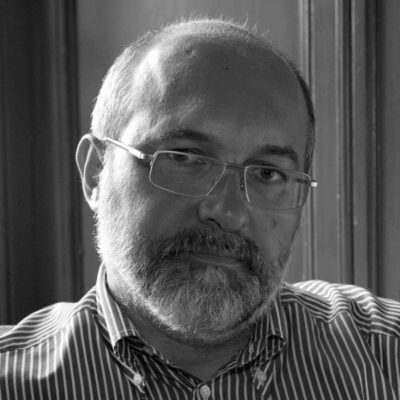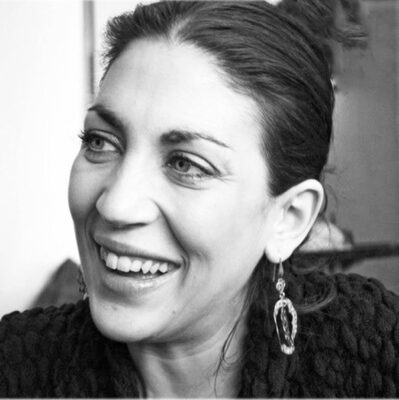Three different researchers in the fields of arts, culture and communication, Eleonora Belfiore, Giuliana Ciancio and Pier Luigi Sacco, give their views on how the corona lockdown in spring 2020 has had an impact on the cultural sector in Europe. The lockdown itself was a challenge, but it has also revealed some deeper problems. The article was written on the basis of presentations from three different Italian researchers from different parts of Europe at the ADESTE+ Conference on 15 June 2020.



Striking a balance between radical thinking and mere survival. Eleonora Belfiore, Professor of Communication and Media Studies at Loughborough University, UK
The pandemic has brought into stark relief some of the longstanding issues of culture and participation within Europe. This has to do with the prevalence of freelance and insecure labor in the sector and how in the gig-economy it has become difficult to make interventions even when policymakers want to help and support the workers, and how global unforeseen events can disrupt the sector in a very fundamental way.
It would be interesting to explore whether that’s been the same across Europe and beyond, and how we could come up with measures of support and intervention for the sector both by government and the funding bodies which could really accommodate what is a rather vulnerable sector – both in terms of the gig-economy & freelance work as well as geographical variation.
One particularity in the UK is the extent to which both the culture infrastructure and resources are concentrated in the London area. In the context of COVID, there seems to have been a disproportionate difficulty in small and medium scale regional organisations to deal with the crisis. Pretty much every day, there is news of another regional theatre announcing significant reduction and job loss of up to 50% of staff. Others are announcing that they don’t know if they can survive the summer. And this is a problem. Of course there are theatres that are struggling in London, but in London there is a very rich web of theatres where in some regions there are a limited number of these structures.
To give you an example: The Cumbria region has a very well respected theatre called ‘Theatre by the lake’ that has just announced that they cancelled all their productions for the rest of the year, because they can’t manage it. This means that there are now questions as to whether the theatre will survive at all. This is the only theatre producing house in what is a really large county, so if that theatre goes, it is hard for that community to access theatre somewhere else.
A lot of the conversations I hear, which are quite inspiring, are around the fact that we can’t go back to the way things were, that the new normal needs to be a new kind of normal, because the old normal was exploitative, was divisive, was discriminatory, which is all correct. But I am concerned that there is a sense that change is coming, and I am not convinced. We need to work at it, we can’t assume that whatever change comes will be progressive. I think the structures of the status quo are already retrenching, and I think what we want to strike is the balance between recognising that there are currently organisations who are struggling for mere survival who are pushed for radical thinking and brave decisions and experimentation. I think it is going to be a really hard balance to achieve, but we need to acknowledge that for many across Europe, this has now turned into a struggle for existence and that any change will have to happen in that really tough context.
Whilst we don’t want to miss the opportunity to think about change and we don’t want to give up the opportunity to be bold in our thinking and to be up for experimentation and radical thinking, we need to be realistic in our acknowledgement that not all the actors within the sector will have the same opportunity to be bold and radical. There are people up and down the country making horrifically difficult decisions that will affect families, will affect everyday life for quite a large number of people. It is hard to be experimental and take chances if you are a leader of an organisation and the cost of that experimentation is borne out of your staff that you have to let go.
The sector has been hit, but not all the sector has the same tools to respond to the crisis. The impact will be drastic across the board, but it will be felt more strongly in some parts of the sector than others.
Culture as an arena for understanding and experimenting with social and political changes. Giuliana Ciancio, cultural manager, curator, researcher, lecturer and PhD candidate at the University of Antwerp
Culture is a crucial arena for observing and, at the same, for experimenting social and political changes as argued by the sociologist Pascal Gielen and for that reason, I would suggest that Culture is not a neutral space because through its practices and aesthetics it brings to light values and ideologies.
So what does that mean?
Just to give some examples, if we look at the latest ‘attacks’ to the monuments in the frame of #blacklivesmatter movement, those confirm how the idea of beauty it’s not only linked to a pure notion of cultural consumption, but on the contrary they have revealed how art and culture need to be understood as complex social and political expressions of our societies.
If we look at the Occupy movement in 2011 – which was a reaction to forms of inequalities introduced by measures after the 2008 financial crisis – it is interesting to observe first of all that they were globally interconnected as well as locally anchored. Secondly, they brought to light the notion of civil and cultural participation, understood as the possibility to imagine new social and political models, engaging different segments of society. Thirdly, in some cases the performing arts sector has been the concrete arena for these political actions: in Italy the Occupy movement found its origin in the occupation of the ancient theatre Teatro Valle in Rome.
I do not wish to analyze the results of 2011 here (or the impact of the latest movements), and it is still too early to compare the crisis we are experiencing nowadays with the 2008 crisis. What I would like to highlight though, is that civil and cultural participation are pillars of our democracies, that plays a crucial role, especially when reacting to asymmetric or unequal distributions of power and economic resources.
As seen in the last decade, audience development and audience engagement can impact on the DNA of cultural organisations, the practices of artists, on citizens and on our definition of culture. On the one hand, Audience Development and Audience Engagement has been used to legitimize hierarchical perspectives, especially when it is activated in pre-ordered spaces of cultural organizations. On the other hand we have also seen how important democratic cultural and policy changes has been introduced, when we avail ourself to horizontal decision making processes between curators, artists, citizens and local policy governments. For example, this is what we are trying to do within the frame of the EU project Be Spectactive and have also been seen in the experimentation of different EU cultural cooperation projects.
This approach can create new perspectives on the framing of cultural programs and art practices and give voice to the cultural expressions of complex societies, something that is possible when safe spaces of negotiation are created. Zygmunt Bauman has very well described the ‘crisis of truth’ between citizens and their political representations at local, national and European level, and analyzed the conflict between the local and global dimensions and the consequent economic and political discrepancy generated by it. Within this discrepancy he saw the role of culture as a strategic site for re-establishing the ‘trust’ that is crucial for the democratic development of our social and political contexts.
Therefore, what COVID has brought to light is the difficulty of maintaining these safe spaces of negotiation in moments of crisis, as can be seen in different countries across the globe. The pandemic crisis has revealed the economic inequalities in our societies, and with it the experience that we are not all in the same boat. The feelings of mistrust, of being subjected to forms of economic inequality, brings again to centre the need for civil engagement to shed new light on the notion of culture and cultural participation.
Nowadays we are seeing that the role played by EU cultural networks is crucial for advocating in favor of the sector and connecting the emotions of many cultural institutions and organizations across the EU. Due to the fact that the specificities of our sector still seem unknown, cultural activists in different cities are reacting to the crisis by studying and writing possible policy indications. Furthermore, citizens are asking for culture, not in the sense of ‘consumption’ of artistic events, but in the form of spaces where we together can share emotions and go through the social trauma we are all experiencing.
Where are we, and what can we do as curators, researchers, and artists?
We are acting in a grey zone between the global dimension and local needs where we need to take the variety of emotions that are characterizing our societies nowadays into account. Being aware of this peculiar context, we have to foster cultural participatory approaches that are able to consider social, political and economic diversities. Our responsibility is to advocate for culture, especially in this pandemic emergency, and this has to pass through a political and concrete economic recognition of the strategic role of culture for our societies.
Culture is a non-neutral space, a strategic site where negotiations can take place. It is a space where we can try to establish a notion of trust between citizens and those who design the policies. Cultural participation is a concrete expression of democracy, it is an instrument that can give voice to the rich and diverse social, political and economic ecosystem in which we live.
We face a lifetime opportunity of putting culture on the policy map. Pierluigi Sacco, Professor of Cultural Economics, IULM University Milan; Co-Director of the Computational Human Behavior (CHuB) Lab of Bruno Kessler Foundation, Trento, and Senior Researcher, metaLAB (at) Harvard
Culture is missing from the mental map of politics, policy makers don’t understand culture, and the reason is that there has been a long tradition of dismissive ways of looking at culture and therefore the sector is extremely fragile and the safety net around the sector is much more loose than for other sectors.
Despite this difficult situation, despite the lack of a safety net, despite that many cultural institutions are fighting for their survival today, now is the moment to put culture on the map. We cannot wait for others to solve this for us. Here is how:
The social impact through culture’s capacity to affect people’s behaviour, emotional reactions, and cognitive reactions can really make a difference. We have a pandemic crisis, we have mental health problems, we have social disconnection and isolation, and culture can be part of a solution to these problems. Think for example what culture has done for people during lockdown.
It is very difficult to find ways of addressing problems like social disconnection and isolation, marginalisation of ethnic groups, and more generally xenophobia, without considering how culture can be a platform for people to learn the social skills and the cognitive abilities that are needed to deal with ‘the other’ or to deal with a state of social isolation and emotional connection. This should be at the heart of the toolbox of policy makers to solve these societal challenges. If this is not happening we cannot blame politicians, we can only blame ourselves for not having been effective enough in demonstrating this potential.
There are many interesting social and cultural innovation projects that are able to mingle these dimensions in powerful ways. These are not recognised enough, although WHO clearly has made a point that culture can become a component of an integrated public health strategy. Not simply to cope with illnesses but as a prevention tool.
Many cultural platforms are moving very actively in this direction and they have to come together into a wider platform, because there are so many deserving and relevant activities that are starting to have a voice in the European debate as a critical mass.
Most of the provisional content during lockdown has passed through digital content platforms, and the big majority of these digital content platforms are private, of course, and they follow private criteria for choosing the content and how to deliver content under certain conditions and to certain audiences, but there is no reason why we shouldn’t have a public counterpart to this platform economy.
I see a huge opportunity to make this impact visible as far as a public platform delivers services such as special programs for socially isolated people or giving visibility to small organisations that would never make it to the big platforms and at the same time have different needs. Digital workshops enable people to reach certain types of goals, for example for minorities. And of course there is a huge opportunity to connect with the educational system, because the educational system is going digital, at least to some extent. That’s not bad if we do this with intelligence and a real sense of purpose.
Culture, the arts and the artist ask the questions that nobody else does, not only in the inconvenient questions but also the unlikely questions that genuinely lead to the real innovations. Not all of them, not all the time, but some of those questions prove to be important in giving a different sense of direction to certain types of innovations and to cultural development and integration of cultural content with other fields, or cultural crossovers as they are called by the European Commission.
I think that a public platform could be a beacon of radical, social, technical innovation, which is culturally driven. We have the money actually, because all around Europe we have recovery funds for the post COVID crisis, and of course these recovery funds are mostly conditioned to structural investments that can make a difference to quality of life, income opportunities, and global competitiveness. A public platform that does exactly what I am trying to indicate in terms of innovation, connection with the educational sector, giving a voice and platform to organisations or cultural fields and to integrate the platform itself in public health strategies could be a very reasonable candidate for substantial absorption of resources from recovery funds, and this is what we need politicians to understand.
We need a serious advocacy which is not simply ‘please help us, we are a fragile sector’, but ‘please keep an eye on what we can do to solve your problems and please put us in the agenda.’
ADESTE+ is a European project funded by Creative Europe under the European Commission dedicated to fostering audience development and audience engagement, and this year the team behind the project hosted the free online conference series Change Within Change.


